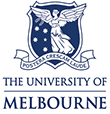20 Apr 2020
Issue #3: Immuno, Immunis, Immunity…
Setting it Straight - Issue #3
Written by Nobel Laureate Professor Peter Doherty
Words, words, words. In dealing with COVID-19 (now there’s a new word for everyone!) we’re being bombarded with partly familiar, or totally unfamiliar words. And of all the science-speak you’re currently encountering is my principal research area – immunology – which definitely has more words than just about any other area of medicine. That’s not because immunologists, who work on everything from asthma to arthritis, are an especially verbose lot. It’s just that the whole subject of immunity is both vast and immensely complex.
When it comes to COVID-19, immunologists are of course, working very closely with virologists, the people who know all about how viruses grow and exploit and/or disable the molecular machinery of the cells they infect. Our joint effort is focused on the task of making a safe and effective vaccine that will end the COVID-19 pandemic. Driving hard towards that goal, the lab scientists work closely with physicians and nurses as, with informed consent from patients, they take the swabs and blood samples for the intense, high-tech, lab-based analysis that is rapidly enabling a much better understanding of the human immune response to the SARS-CoV-2 virus.
Our physician/scientists and research nurses live in both worlds, the lab and the hospital ward. This is a new virus, and they will be the first to tell you that COVID-19 is not “just a bad influenza”. That’s why Institutes like ours, the Doherty Institute, are so important: they bring the different science and medical subcultures that focus on a broad theme (infection and immunity in our case) together in the one building. Working as teams and, at times, explaining our different specialist “languages”, we’re learning a lot about COVID-19 very fast.
But, as it’s early days and the stories are still evolving, this is a good time to step back and introduce basic themes to our understanding of immunity. And, as this takes shape, we won’t only be considering the human immune system. Other species, all higher vertebrates and mammals like us, are intimately involved in the COVID-19 saga. For a start, the virologists are pretty sure that SARS-CoV-2 is a virus that normally lives in bats and that it jumped across into us via another warm-blooded animal, perhaps the Pangolin, sometimes referred to as a “scaly anteater”.
As we seek to make a vaccine, we’ll be doing what’s called pre-clinical testing in species like laboratory mice, ferrets and monkeys (Rhesus macaques). Some aspect of immunity can be analysed by working with cultured immune cells in biologically-secure safety cabinets located in pristine laboratories. But, though lab work is central to the analysis, the complexity of immune responses requires that we understand what’s happening in infected individuals. Regulatory authorities (like the US’s Food and Drug Administration and Australia’s Therapeutic Goods Administration) that approve vaccines demand prior, thoroughly researched evidence of safety and protection in other mammalian species before beginning any human efficacy trials.
Back to words: let’s start with immunity. The word comes from the latin term “immunis”, meaning “without tax”. Roman soldiers who had returned from foreign wars could, at least for a time, be granted tax-exempt status as members of the Genio Immunium, which owed adherence to the Goddess Minerva. Minerva had a number of divine portfolios, including wisdom, medicine, the arts and defensive warfare. The “tax” that immunity has evolved to defeat is the tax of infection.
All species of animals, and plants for that matter, exploit a spectrum of strategies that operate to limit the functional compromise (even death) caused by the viruses that invade, and grow in their cells. One approach (e.g. insects) is to multiply very quickly and produce enormous numbers of progeny in the certainty that some will survive. Beyond that, even the simplest animals deploy an armamentarium of “immediate defence” cells and molecules. You might, for instance, be familiar with terms like macrophages (“big eater” cells), interferons, or defensins. Such cellular or chemical “effectors” are the mediators of innate immunity, or the innate immune response. Innate immunity is as important in us as it is to fruit flies and slugs. In fact, we share some of the same molecular pathways.
Beyond that, the higher vertebrates (mammals, birds, reptiles and the bony fish) share a further level of complexity that we call adaptive immunity. In an evolutionary sense, this is much “younger” than innate immunity, having emerged 350-400 million years ago, around the time that the first sea-dwelling vertebrates crawled onto land and became air breathers.
As we talk about vaccines, antibodies and so forth, what we are discussing is adaptive immunity. And that’s also true when we use terms like immunosenescence (immune decline in the elderly) and immunocompromise (failed or diminished immune capacity). But, every adaptive immune response goes forward on a background of innate immunity, and that’s where some of the dangers we face with COVID-19 may rest. And so, we come to the very beginning of our periodic discussion of the complex world of immunity. There’s a way to go!
Artwork: Illustrated by Antra Svarcs for the Metro Tunnel Creative Program (not under Creative Commons license)




